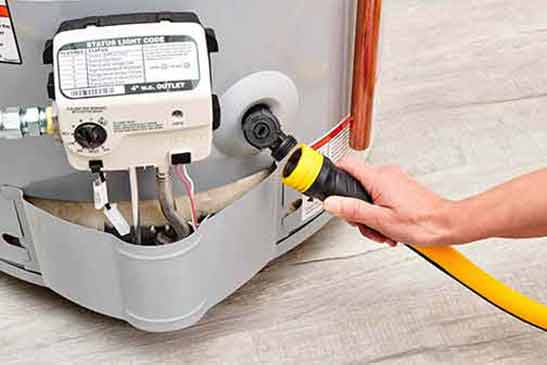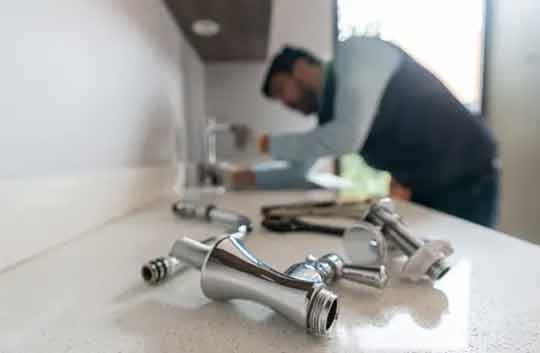
Having a refreshing hot shower is one of life’s simple pleasures. However, there may be instances when the water flowing through your showerhead is frustratingly cold. This lack of hot water can diminish the quality of your daily routine and leave you feeling unsatisfied. Understanding the common causes of no hot water in showers is crucial in finding effective solutions to resolve this issue and restore the comfort and luxury of a warm shower. In this article, we will explore these causes and provide you with actionable steps to rectify the problem.
Insufficient Hot Water Supply
One of the most prevalent reasons for encountering no hot water in showers is an insufficient supply. The issue might lie with your water heater, specifically if it is not adequately sized for your household’s hot water demands. If the heater’s capacity is too low, it may struggle to provide a continuous flow of warm water.
Solution: Consult a professional plumber or heating specialist to repair your water heater and determine if upgrading to a larger capacity model is necessary. Additionally, consider adjusting water usage habits to ensure the available hot water can adequately meet your needs.
Malfunctioning Water Heater
A faulty water heater can also be the root cause of no hot water in your showers. Various components within the heater’s system can fail, leading to a disruption in the heating process.
Solution: Start by checking if the pilot light is on. If it has gone out, relighting it may resolve the issue. However, if the pilot light consistently goes out or the water heater shows signs of other malfunctions, it is best to call a professional plumber to diagnose and repair the problem.

Sediment Build-up in Water Heater
Over time, sediment can accumulate at the bottom of your water heater tank. This build-up can interfere with the heating element, reducing its efficiency and causing a decrease in hot water production.
Solution: Regular maintenance is key to preventing sediment build-up. Draining and flushing your water heater at least once a year can help remove the accumulated sediment and optimize the heater’s performance. If you are unsure how to perform this task or prefer professional assistance, enlist the services of a plumber.
Improperly Set Temperature
The water temperature setting on your water heater can inadvertently cause no hot water in your showers. If the temperature setting is too low, the water may not reach the desired warmth.
Solution: Check the temperature setting on your water heater and adjust it as needed. Most water heaters have a dial on the front or side that allows you to increase or decrease the temperature. Set it to a level that provides the desired hot water temperature.
Failed Dip Tube
The dip tube is an essential component of a water heater that directs cold water to the bottom of the tank for heating. If the dip tube breaks or deteriorates, it can result in a cold water mixture flowing directly into the hot water outlet, reducing the temperature significantly.
Solution: If you suspect a failed dip tube, it is advisable to seek professional assistance. A professional plumber near you can inspect the water heater and replace the dip tube if necessary, restoring the proper flow of hot water to your showers.

Cross Connection
A cross connection occurs when cold water enters the hot water line due to a faulty plumbing connection. This mixing of hot and cold water can diminish the overall temperature of the water flowing through your showers.
Solution: Identifying and resolving cross connections can be a complex task best left to a professional plumber. They have the expertise to identify faulty connections and implement the necessary repairs to restore the proper separation between hot and cold water lines.
Broken Mixing Valve
The mixing valve, also known as the shower valve or temperature control valve, regulates the water temperature coming out of your showerhead. If this valve becomes damaged or worn out, it can cause an imbalance in hot and cold water distribution, resulting in no hot water.
Solution: If you suspect a broken mixing valve, it is recommended to consult a professional plumber. They can inspect the valve and replace it if necessary, ensuring a proper balance of hot and cold water for your showers.
Localized Plumbing Issue
In some cases, the lack of hot water in showers may be specific to one bathroom or a particular shower. This localized issue can be caused by plumbing problems unique to that area.
Solution: Inspect the plumbing in the affected bathroom or shower for any visible signs of leaks, blockages, or faulty connections. If you are unable to identify the issue, contacting a residential plumber who can conduct a thorough investigation and provide targeted solutions can help resolve the problem.
Conclusion
Experiencing no hot water in showers can be a frustrating ordeal that disrupts your daily routine. By understanding the common causes and implementing the effective solutions outlined in this article, you can ensure a consistent supply of hot water for your showers. Remember to consult a professional plumber for complex issues or if you are unsure about any DIY repairs. With the right approach, you can once again enjoy the luxurious comfort of a hot shower whenever you desire.
